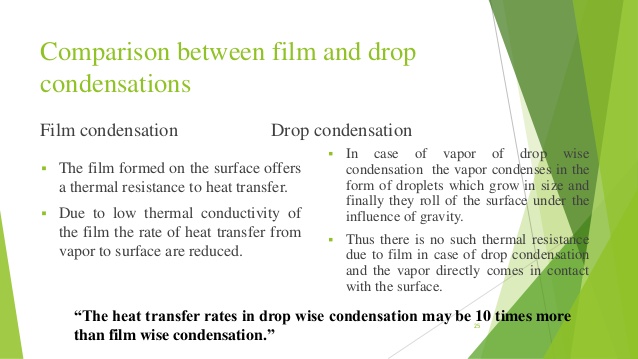What is condensation?
When the temperature of vapour is reduced below
its saturation temperature, condensate occurs.(In which vapour is converted
into liquid.)
Film wise condensation
·
Most heat transfer surface
on a heat exchanger are made of wettable materials.
·
During condensation, a film
of condensate spreads over these surfaces. As the more vapour condensation on
the outside of the film its thickness increases and under the action of gravity
the film flows continuously over the surface.
·
A thermal gradient exists in
the film and as a result it acts as a resistance to heat transfer .
·
Film condensation is
generally characteristic of clean uncontaminated surface.
Drop wise condensation
·
If the heat transfer surface
are treated to become 'non-wettable' the condensate that forms, on the surface
will be shaped like spherical beads.
·
Here the vapour condenses
into small liquid droplets of varying sizes.
·
These drops may ultimately
get detached from the surface and eventually fall down.
·
Drop wise condensation is
highly preferred to film wise condensation, it is extremely difficult to
achieve or maintain it. This is because the condensate has a greater tendency
to wet the surface.





Comments
Post a Comment